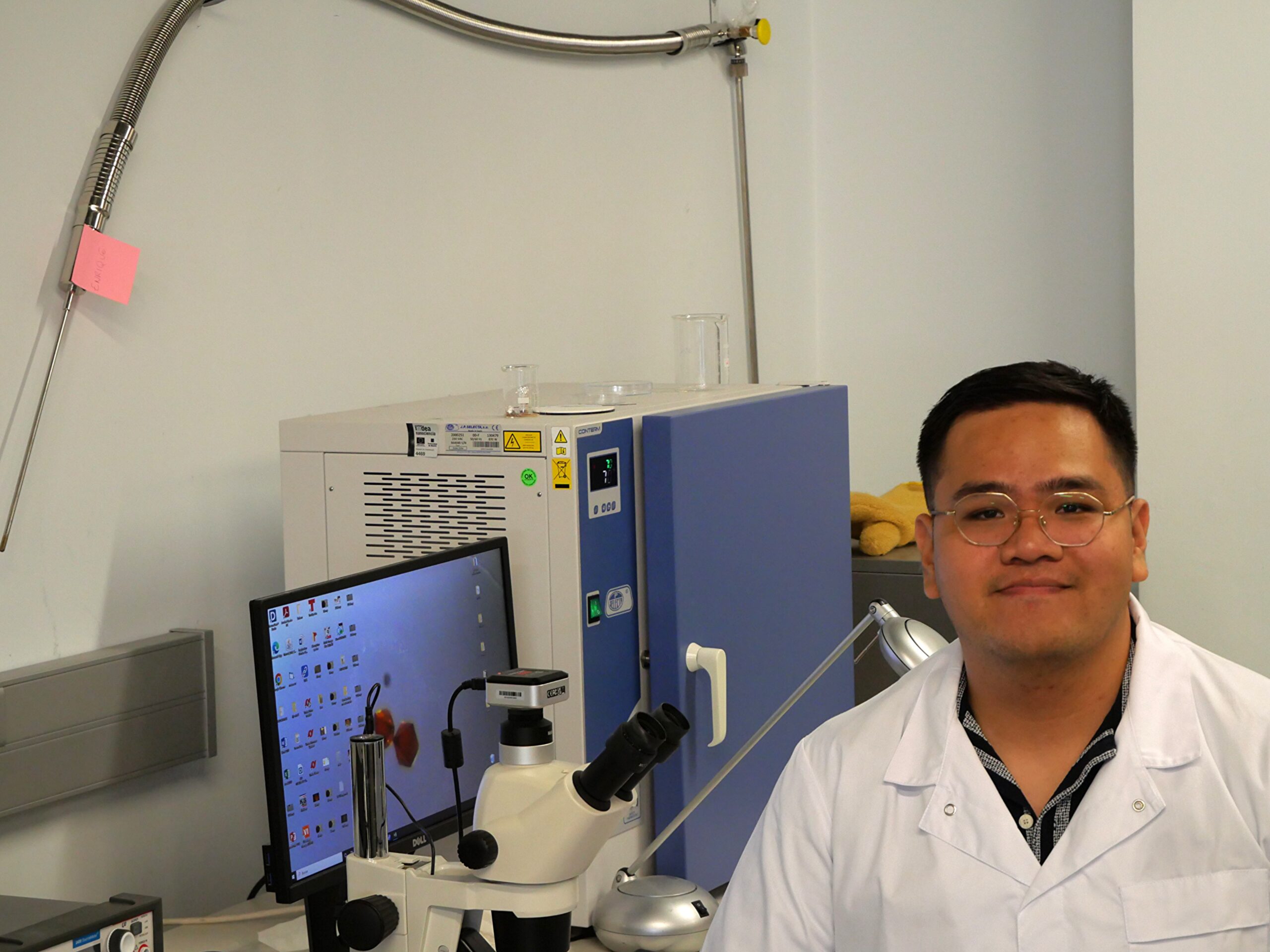
Cesar Miguel Fabro
EDUCATION
I received my bachelor´s degree in Chemistry from the Ateneo de Manila University (Quezon City, Philippines) in 2022. There, I conducted research on carrageenan polymers. I also graduated with a minor in economics.
I graduated with two master´s degrees in Chemistry from both the Université Paris-Saclay (Paris, France) and the Uniwersytet im. Adama Mickiewicza w Poznaniu (Poznań, Poland) in 2024. This was done via the Erasmus Mundus Joint Master in Surface, Electro-, Radiation, and Photo-Chemistry (SERP+).
My master thesis internship project entitled ¨Imidazolium-modified nickel porphyrins: The role of electrostatics in hydrogen evolution catalysis¨ was conducted at the Commissariat à l’energie atomique et aux energies alternatives (CEA) – Laboratory of Fundamental Mechanisms in Bioenergetics (LMB) in Paris, France.
PROJECT
Structure-property-function relationships in Metal Organic Frameworks for Energy Harvesting.
PI: José Sánchez Costa and Enrique Cánovas Díaz.
Where do you come from?
I’m from the Philippines, from the town of Taytay, just east of Manila. The town is known as the “Garments Capital of the Philippines,” and you can find a multitude of cheap yet high-quality clothes in the local markets. Just nearby are the mountains and waterfalls of Antipolo, including the Masungi Georeserve, which features breathtaking rock formations and views of the surrounding forests.
What are your main personal and professional concerns?
As a researcher and academic, I’m also troubled by the “publish or perish” mentality that dominates our field. I strongly believe more value should be placed on the quality and reproducibility of research, rather than just the quantity. Other contributions, such as mentoring students and delivering impactful presentations or lectures, should also be recognized as important measures of academic success. On a more personal note, I’m especially concerned about my husky, Yuri, who I had to leave behind in the Philippines. I worry about whether he’s getting enough exercise and playtime, especially since I used to be so involved in his daily routine.
What does your research consist on?
For my PhD project, I’m working at the intersection of chemistry and physics, focusing on materials called metal-organic frameworks (MOFs). These materials have a range of interesting properties that make them promising candidates for applications in sensing, gas storage, and catalysis, among others.
On the chemistry side, I’m synthesizing MOFs based on a triphenylene ligand, and working to optimize the synthesis so we can tune the properties of the resulting materials. On the physics side, I use time-resolved terahertz spectroscopy (TRTS) to probe the charge transport mechanisms in the MOFs we create. This technique gives us a deeper understanding of how these materials function and helps guide their overall design. Broadly speaking, my research is about bridging the gap between chemists and physicists to develop a more holistic understanding of these complex materials.
What power does science have to transform the world?
On the nanoscale, matter starts to behave in ways that are very different from what we see in the macroscopic world. For example, some nanoparticles can exhibit unusual light absorption, while others might change color or conductivity with temperature. By studying these phenomena, we can harness them for innovative applications in electronics, medicine, and energy.
Nanomaterials could lead to faster, smaller, and more energy-efficient electronic devices, enable targeted cancer therapies that reduce side effects, and significantly improve solar cell efficiency. Nanoscience gives us the tools to manipulate matter at the atomic level, opening up transformative possibilities across nearly every field. With continued research and responsible development, it has the potential to reshape many aspects of modern life.
Where do you find inspiration?
I’m a firm believer in maintaining a good work-life balance, so I often find inspiration in my hobbies outside the lab. Whether it’s finishing a tough set of skullcrushers at the gym, sending a climbing route, playing video games or board games, or enjoying my third tinto de verano while hanging out with friends, I draw motivation from the small joys in life. These moments help me recharge, gain perspective, and come back to the lab full of energy and focus.
Where do you see yourself in the future?
In the near future, I see myself continuing research on MOFs and exploring other promising materials for energy harvesting. I’m also open to working in the energy industry, where I can apply my scientific skills in a more practical, market-oriented context. However, in the long term, I hope to move into policy-making in the Philippines to help bring renewable energy and climate change issues to the forefront of national priorities. I want to share my knowledge with the public and make science a more active force in shaping a sustainable future for everyone.
Why IMDEA Nanociencia?
I chose IMDEA Nanociencia because of the expertise, the facilities, and the community. The research groups here are at the forefront of their fields, publishing impactful studies, hosting informative seminars, and collaborating with top institutions around the world.
The institute also provides great infrastructure to support a wide range of research, with common rooms fitted with equipment for routine analyses and access to more specialized instruments depending on your project needs. Finally, during my first months here as a PhD student, I’ve met many amazing people, both inside and outside my research group, who are not only intellectually inspiring but also have become great friends to hang out with outside the lab.
